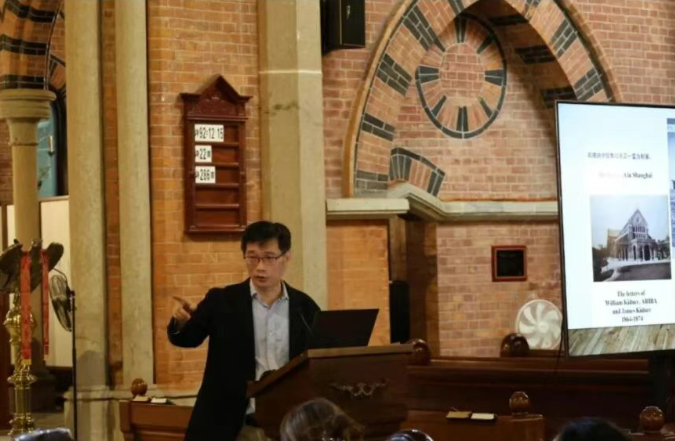On October 26, the fifth session of the Holy Trinity Church Lecture Series took place, featuring a lecture titled "Holy Trinity Church Through Time" by Mr. Gu Mengfei, secretary general of the National TSPM and director of the Holy Trinity Church Management Committee.
According to the hosting church, Mr. Gu traced the history of Holy Trinity Church, highlighting its founding, structural changes, restoration to Chinese Christianity, coverage in social media, and the revival of worship activities. Using the church's architecture as a framework, he described key features, including the clock tower, once a landmark on the Shanghai skyline; the red brick exterior; the stained-glass windows; and the largest pipe organ of its time, offering the audience a vivid portrayal of the church's historical appearance.
Mr. Gu also shared historical anecdotes, including the founding of the Chinese Jesus Independent Church at the site, the contributions of missionary doctor Richard Brown, who worked alongside Norman Bethune in support of China's War of Resistance against Japan, and the church's connections with the three bishops from the Zheng Hepu, Zheng Jianye, and Wang Shenyin families, noted for their patriotism and religious pioneering.
Holy Trinity Church, also known as the "Red Chapel (红礼拜堂)," was originally built in 1847 and is among the oldest surviving Protestant churches in China. Designed by British architect Sir George Gilbert Scott in the Victorian Gothic Revival style, it was elevated to cathedral status in 1875 and became a prominent Anglican center in the Far East and a landmark of old Shanghai. Following the founding of the People's Republic of China, the church gradually returned to Chinese Christianity, reflecting the historical process of the church's self-governance, self-support, and self-propagation. Since 2004, CCC&TSPM offices have been located in the church, which has undergone extensive restoration. It received the 2017 UNESCO Asia-Pacific Heritage Award for Cultural Heritage Conservation and officially reopened in December 2022, continuing to serve as a church directly under CCC&TSPM while showcasing its historical heritage and faith to the public.












